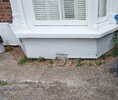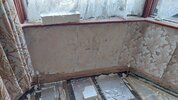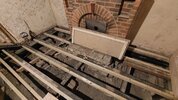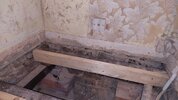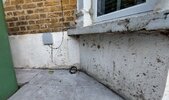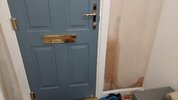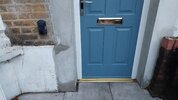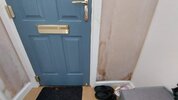Hi all, I have recently completed a full renovation of a Victorian end of terrace house. After moving in a few months ago, I started noticing wet patches on the ground floor which I am not sure if it is rising damp. The house is solid wall, no DPC done previously, and has suspended timber floor. I have got new pipes and re-wired the entire house. The cement render outside can be found in every single terraced house on my street, so I suspect it has been there for a very long time.
The damp is only found on the front side of the house near the front door and near the bay window (see photos below). On the hotter summer days the wet patch is less, whereas on the rainy days the wet patch is darker. It makes me wonder whether this is rising damp though as I don't see any signs (so far) on other sides, either the wall sharing with my neighbour, or the other external wall which is a park outside and and has plants and trees right on the wall and in theory would attract more moisture. My other suspicion is that it could be that the air vent brick outside being blocked after I have redone the patio at the front of the house. The outer ground level used to be lower with a step into the house, which I have levelled it such that there is a slope from outside to inside for my child who is on wheelchair.
I would appreciate any suggestion and advice on how to address the issue. Thank you.
Before:
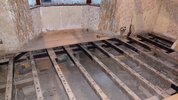
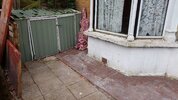

After (damp in the first 3 pictures near the door and bay window):
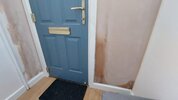
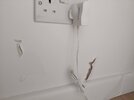
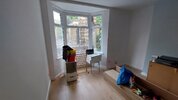
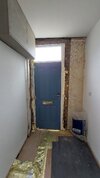

The damp is only found on the front side of the house near the front door and near the bay window (see photos below). On the hotter summer days the wet patch is less, whereas on the rainy days the wet patch is darker. It makes me wonder whether this is rising damp though as I don't see any signs (so far) on other sides, either the wall sharing with my neighbour, or the other external wall which is a park outside and and has plants and trees right on the wall and in theory would attract more moisture. My other suspicion is that it could be that the air vent brick outside being blocked after I have redone the patio at the front of the house. The outer ground level used to be lower with a step into the house, which I have levelled it such that there is a slope from outside to inside for my child who is on wheelchair.
I would appreciate any suggestion and advice on how to address the issue. Thank you.
Before:



After (damp in the first 3 pictures near the door and bay window):








